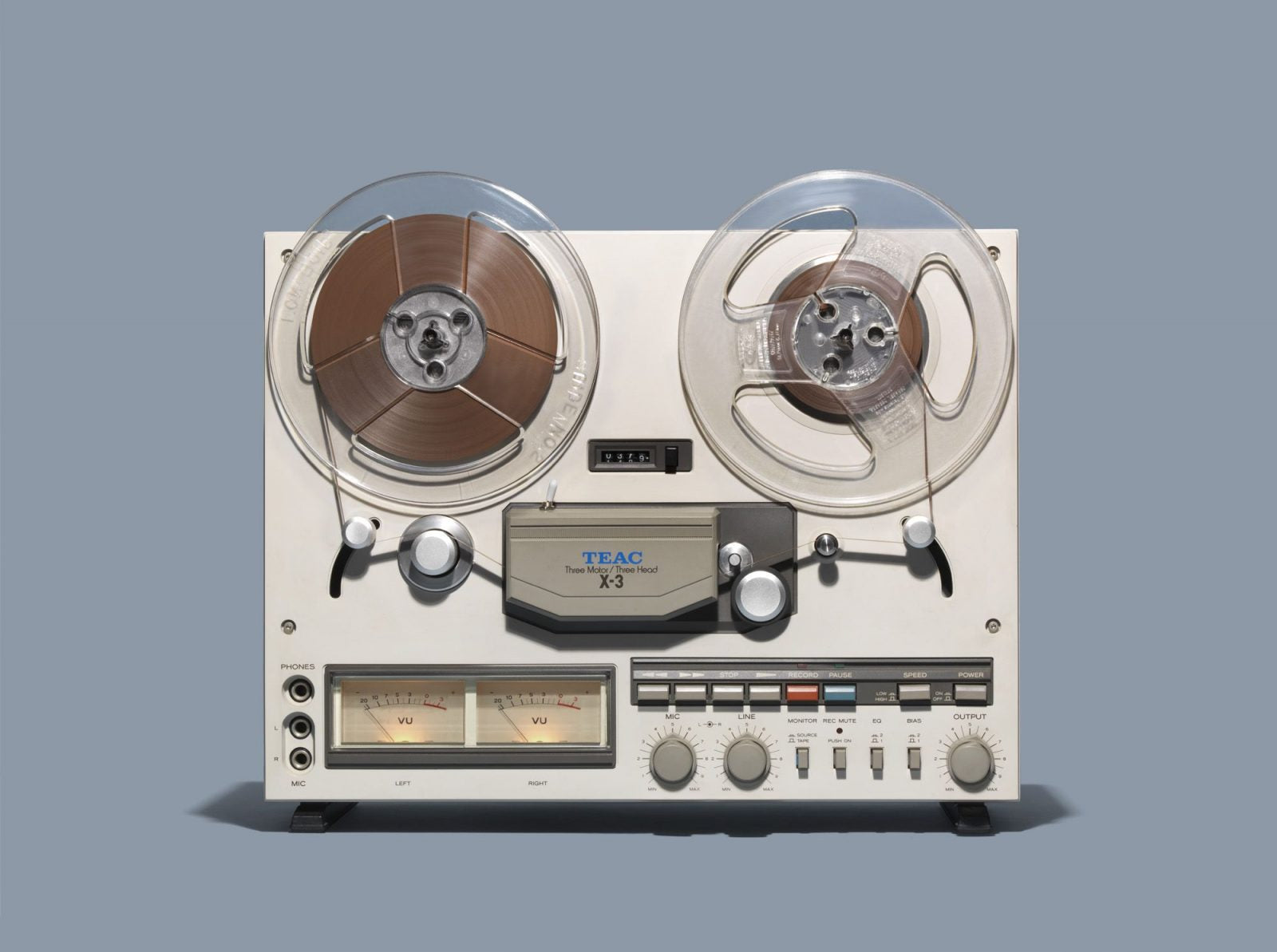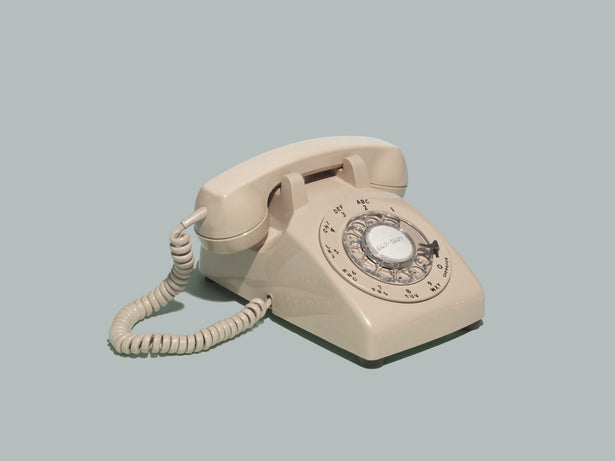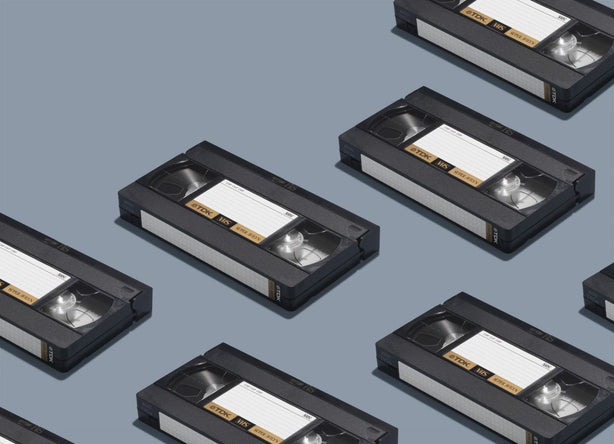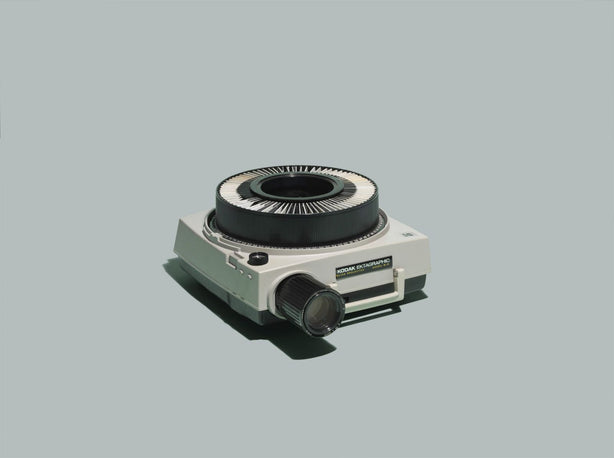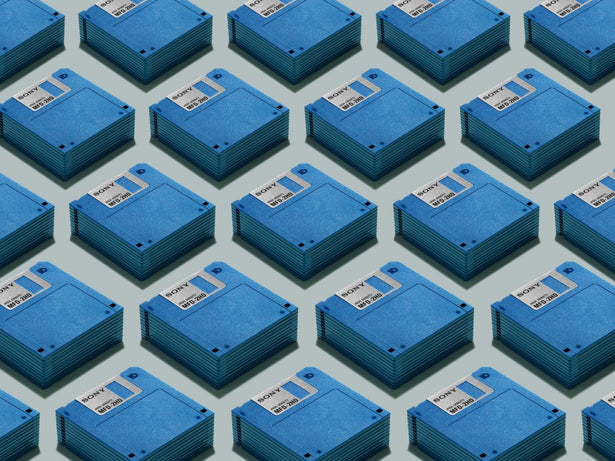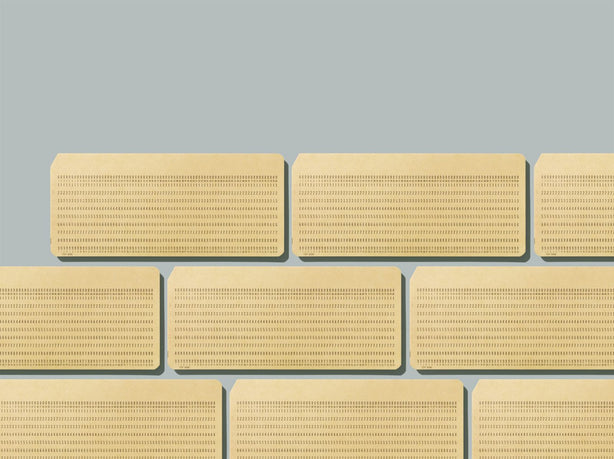You may remember when caller ID was a luxury, floppy disks saved all your work, cell phones didn’t fit into pockets, and "BE KIND, PLEASE REWIND" stickers graced every video you rented from Blockbuster. Seems so antiquated now, right?
So what happened to all of the old floppy disks and brick cell phones? Photographer Jim Golden explores these vintage items in a still life photo project rightfully called Relics of Technology.
Where did you find the "Relics of Technology" and how long did it take you to collect all of these items?
I found the brick phone at a thrift store in central Oregon about five years ago. The rotary phone was a prop on another set a few years back. The rest of the items were either from thrifting, asking around among friends and prop stylists, and a few more obscure items were purchased from eBay (i.e. punched cards).
How did you photograph the relics to give all photos a retro look?
I wanted to make these images very stark. I had this vision of computer manuals and catalogs from the 60s-80s, but I also wanted to play with patterns a bit. My collections series was shot all in-camera, and I wanted to move away from these huge one-shot images into single item type images that were incredibly well crafted—you can see the textures, finishes, grooves, etc. that describe the feel of these objects very well. The media objects that are turned into patterns were shot as singles or small groups and repeated in post. This also harkens back to the older printed manuals, where the "special effects" were done analog - on the stripping table manually editing film, so they have this weird quality to them, where the images "work," but you know there is a little something off. Back in the day that was the best they could do; today it’s something quirky and cool.
(Side note: at the beginning of my career in the mid 90s, I worked in a few shops that still had guys stripping film on the table and was amazed at some of the stuff they pulled off using analog methods. It was nearly as amazing as it was to be learning how to use Photoshop as a tool to alter images–Photoshop 2.0, no layers, the "old" days!)
Was there a lot of editing involved?
Other than creating the patterns, very little other post production was involved. It was mostly spotting.
What gear did you use to photograph these items?
Gear wise, pretty straightforward. Hassie H4D-50 mounted on a Foba camera stand (my absolute favorite piece of gear in my studio). This was tethered to iMac 27", Profoto D4 pack, two Profoto Acute/D4 heads, Avenger c-stands. Nothing special really, just the tried and true gear in my shop. I love the Hassie systems with Hassie backs. The H bodies are bomber, the best industry standard you can find anywhere. Lenses are sharp and most of the version 2 lenses are even better. Day in and day out, shoot after shoot, the Hasselblad system has been great for me. I think only twice in eight years have I had a camera go down.
You specialize in still life and have photographed collections before. How does this project compare to your other works? What did you do differently with Relics of Technology?
See above. The collection images were very successful for me, both personally and professionally. I've been getting hired almost exclusively to shoot these types of images commercially for the past two years (See another project here). The downside is that’s all I've been getting hired to do, so I wanted the Relics project to remind my people I could shoot other ways, but stay within the same aesthetic—hard light, very straightforward imagery, minimal post effects, etc. Both of these projects are personal for me, but also need to be commercially viable. I'm primarily a still life shooter in Portland, albeit a cool town, but definitely off the beaten path in the commercial world, so I need to grab people's attention with the personal work I produce.
You made some of the photos into GIFs. Why did you decide to do so?
It just made sense! We flipped that reel to reel on and I was looking through my viewfinder and thought it was magical. I knew I needed to animate them. When people hear animated GIF or cinemegraph, they often think "cheesy" or gratuitous, but I feel that these animations are a perfect fit for the subject matter; they enhance the viewing experience. On my website (view the GIFs on Jim's site), they just start moving and I think it's a subtle, but gratifying experience for the viewer.
Favorite piece in this collection?
Favorite piece is a hard one. Favorite image? The reel to reel GIF, the blue diskettes, and the punched cards.
Did you purchase all these items and are you keeping them as a personal collection?
No, I don't keep most of the props. I don't have a lot of storage at my studio or at home, so I recycle them or sell them on eBay, etc.
What did you find most interesting and rewarding with this project?
From a personal standpoint, I've wanted to explore the subject matter and the idea of dead media, lost formats and dead technology, for a couple years. It was great to finally get the items together and shoot the project. It was very engaging to make the images, to push the light around to bring out all the features and textures, and elevate these often overlooked and forgotten items into extraordinary images.
What was the most challenging about this project?
Figuring out how I was going to photograph all these items of different shapes and sizes and make it feel like a cohesive body of work that stayed true to the vision I had. The angles, colors, and arrangements were carefully thought out and tested for three days before we started making the final images for the project. Then I had to edit out about 10 weaker images; editing is always tough especially when you're this attached to the subject matter.
KEEP UP WITH JIM: Website | Print Shop | Facebook | Twitter | Instagram | Tumblr

